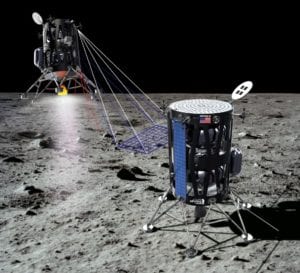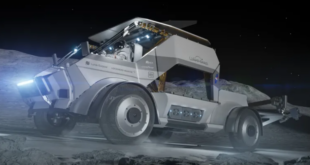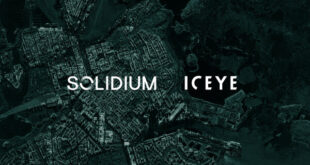
Intuitive Machines’ Nova-C Lander will capture raw optical images of the lunar surface and convert them into Terrain Relative Navigation (TRN) measurements to land within 200 meters of its intended landing site.
Intuitive Machines navigators led by Co-Founder, Dr. Tim Crain, attended the American Astronautical Society’s Annual Guidance, Navigation and Control Conference in Colorado, US. The conference’s 43rd meeting included industry and academia experts from Utah State University’s Space Dynamics Laboratory, The University of Colorado- Boulder’s Laboratory for Atmospheric and Space Physics, Rensselaer Polytechnic Institute’s Sensing, Estimation and Automation Laboratory and Embry-Riddle Aeronautical University.
Utah State University Guidance, Navigation and Control Assistant Professor Dr. Randy Christensen presented a paper evaluating the performance of the fundamental Nova-C navigation system utilizing linear covariance techniques. Dr. Christensen and his team established that the Nova-C Terrain Relative Navigation (TRN) approach will easily land within 200 meters of the intended landing site and presented a subset of their analysis at the conference.
“The amazing thing is, with this architecture even a small number of TRN measurements during powered descent to the lunar surface will be enough for Nova-C to meet its landing accuracy target,” said Dr. Christensen after presenting his results. “We’ll have more than enough TRN data to meet landing requirements.”
In a parallel session, Shaun Stewart, Nova-C Guidance, Navigation, and Control Lead, unveiled the Nova-C TRN architecture built around an open-source ThinVPU. The ThinVPU is a space flight processor dedicated to taking raw optical images of the lunar surface and converting them into TRN measurements for the main Nova-C navigation software to use to maintain knowledge of the spacecraft relative to the landing site.
“The vision processing unit (VPU) takes the best concepts of image processing from the space community to convert the feature-rich photos of the lunar surface into meaningful data for our flight computer,” said Stewart. “Many of the concepts we’re utilizing have been incubated and presented by colleagues from this very conference. We’re very pleased to contribute to the community by sharing our plans for ThinVPU.”
“Vision-based navigation is increasingly a part of space missions ranging from precision landing to surface mobility to rendezvous and docking,” said Dr. Crain. “We feel that making the hardware and software toolkit of the ThinVPU available to the community will both enhance the robustness of our vision navigation system and lower the overall cost of developing and testing this capability across the industry.”
The ThinVPU images and converted TRN measurements will be the pillars of Intuitive Machines’ Precision Landing and Hazard Avoidance System (PLHA). Nova-C will use these systems as part of its first lunar surface delivery mission, IM-1, set to launch in the second half of 2021. Payload customers for IM-1 include NASA’s Commercial Lunar Payload Services (CLPS) program, Embry-Riddle University and other commercial customers. The completion of IM-1 will be the first mission from Intuitive Machines’ Lunar Payload and Data Services business line which will continue to offer transportation, data and power services for customers for lunar transit, cis-lunar space, lunar orbit and lunar landing.
Founded in 2013, Intuitive Machines was formed from practical experience in large complex space systems development.
 SpaceWatch.Global An independent perspective on space
SpaceWatch.Global An independent perspective on space




